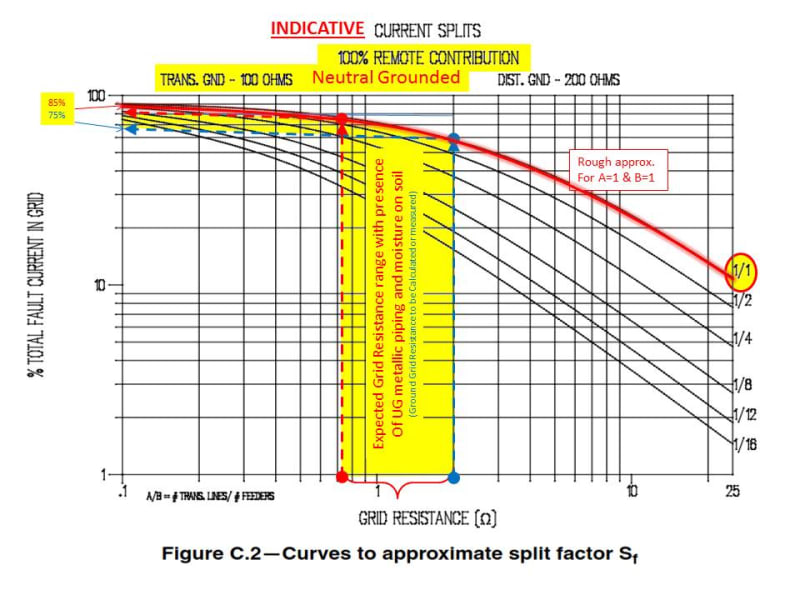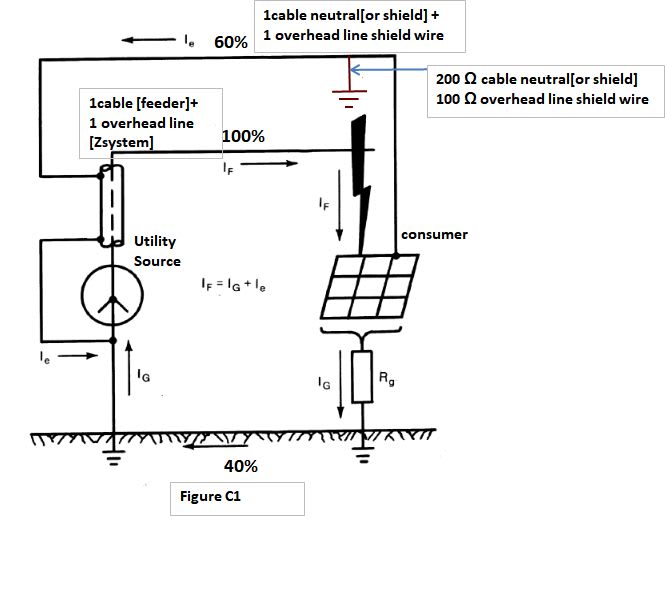thread238-332968
1. I have received positive, negative and zero sequence impedance from the utility for 33 KV feeder, which will supply about 12 MVA to our substation. The measured ground grid resistance is 1 ohm. If I assume a ground fault where 40% of fault current returns thru ground and 60% returns thru shields of 35kV cable, I believe the zero sequence impedance given by utility cannot be used directly in
If = 3*V / (Z1 + Z2 + Z0 + 3*Zn) as the utility has developed a network to have 100% current returned and their Z0 is based on this 100% supply and return. The value of Z0 for 100% supply of fault current and 60% return thru their network will require some new value of Z0.
Unless I have utility's network, I cannot find exact value of new Z0. Is my understanding correct ? Of course, utility will not give that kind of detail information.
2. If the 40% ground fault current flows back thru deep ground to supply substation, the ground grid resistance at our substation will raise the potential at our substation, and will drop the potential at supply substation depending on the resistance of supply station ground grid. This network will be in parallel to the one returning 60% current. Does utility ever give their supply substation resistance, so that one can have total resistance offered to ground current returning to supply station ?
Thanks.
1. I have received positive, negative and zero sequence impedance from the utility for 33 KV feeder, which will supply about 12 MVA to our substation. The measured ground grid resistance is 1 ohm. If I assume a ground fault where 40% of fault current returns thru ground and 60% returns thru shields of 35kV cable, I believe the zero sequence impedance given by utility cannot be used directly in
If = 3*V / (Z1 + Z2 + Z0 + 3*Zn) as the utility has developed a network to have 100% current returned and their Z0 is based on this 100% supply and return. The value of Z0 for 100% supply of fault current and 60% return thru their network will require some new value of Z0.
Unless I have utility's network, I cannot find exact value of new Z0. Is my understanding correct ? Of course, utility will not give that kind of detail information.
2. If the 40% ground fault current flows back thru deep ground to supply substation, the ground grid resistance at our substation will raise the potential at our substation, and will drop the potential at supply substation depending on the resistance of supply station ground grid. This network will be in parallel to the one returning 60% current. Does utility ever give their supply substation resistance, so that one can have total resistance offered to ground current returning to supply station ?
Thanks.




